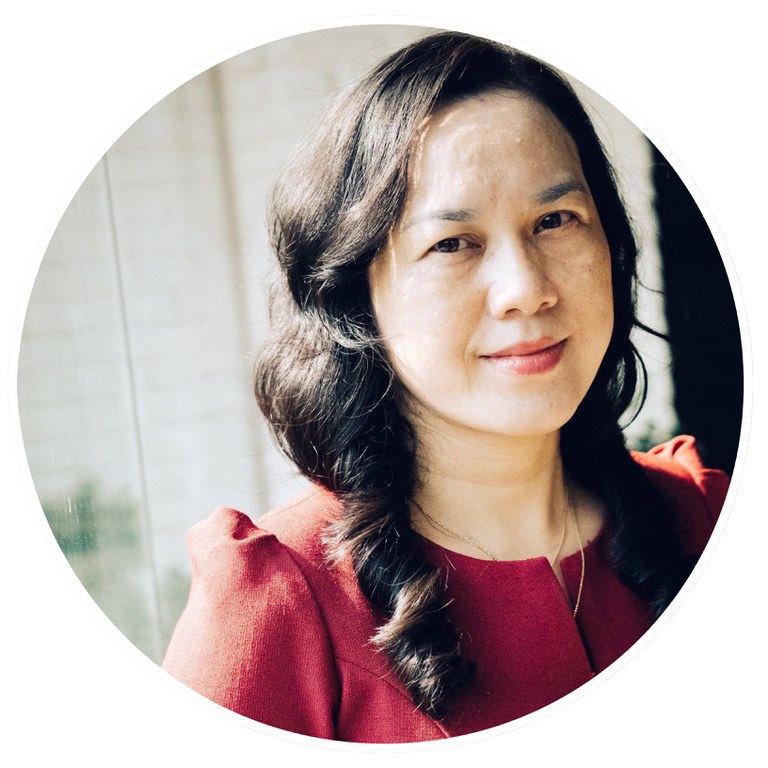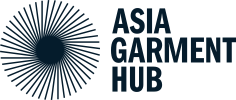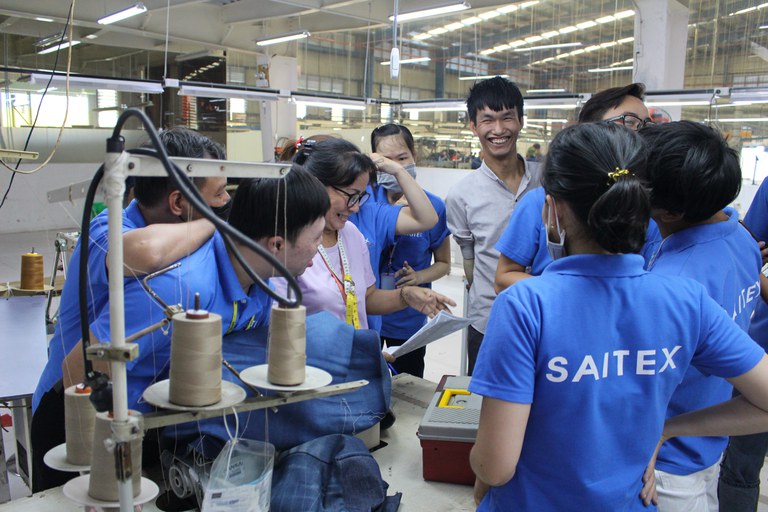"I think everyone wants to do a good job on sustainability, but it involves cost, investment, and most importantly, collaboration"
Oanh, you are HSE & Sustainability Manager at Saitex, a leading garment manufacturer specialized in premium denim and over-dyed products - please tell us a bit about what exactly you do and which areas you are responsible for?
As Saitex's HSE & Sustainability Manager, my role is to ensure that we meet our environmental and social requirements. This includes taking steps to protect the health and safety of our workers, conducting our business lawfully and with integrity. We ensure that working and living conditions are appropriate, that we make efforts to protect the planet, and that resources, including water, energy and waste are managed in a sustainable and circular way. In addition, I would like to move away from over-dyed products, using products that are more suitable to be washed.
You previously worked for Nike giving you an inside look at how brands view sustainability in the supply chain. In what ways has that experience helped you in your role at Saitex?
I worked 11 years for Nike, so I am very familiar with the topic of sustainability. For me, Nike is one of the companies that is at the forefront of creating a good sustainability system within a company. Nike has focused on reducing waste with its closed-loop economy program, which specifically focuses on chemical management and VOC (Editor's note: volatile organic compound) reduction. I was fortunate to have the opportunity to oversee and manage many areas such as HSE & Sustainability, Chemistry, QC, Lab and HRM during my time at Nike. This gave me a good insight about what challenges manufacturers face, and I also understood the impact. Especially thanks to my experience in engineering and management, I was able to successfully execute all kinds of certification and sustainability projects in my role at Saitex.
From your experience, in which areas of the factory is it most challenging to implement ‘sustainability’? And how could this be improved?
In my experience, the areas in the company where "sustainability" is most difficult to implement are systematic compliance. We therefore ensure that the compliance system is mentioned in a responsive and functioning state according to the rules in the internal policy and the national legal system. We ensure that the company and its employees comply with all laws, regulations, government and stakeholder standards, and the company's internal policies. Our systematic compliance process is constantly updated and compliance controls are consistently and regularly implemented. We emphasize appropriate training for all employees. Policies and compliance standards are useless if employees do not understand and follow them. We ensure that all our employees and third-party suppliers read, understand and even sign all compliance commitments made by the company.
You are responsible for overseeing five factories. What defines a good HSE & Sustainability Manager in your opinion?
In my opinion, a good HSE & Sustainability Manager is characterized by a strong sense of teamwork and a comprehensive understanding of the manufacturer's environment and operations. It is also important to work on establishing a good connection between brands and manufacturers, especially when focusing on sustainable development. An HSE & Sustainability Manager should also focus on working closely with non-governmental organizations and the government, and in this context suggest meaningful actions that will provide opportunities not only for the company itself, but also for the community to continuously develop. Lastly, of course, one should be open to learning new things every day.
Let’s talk standards. GOTS, GRS, Bluesign, Oeko Tex, SA 8000, ISO 14001:2015, Fairtrade and B-Corp -there are a lot of them in the garment industry. But they’re often criticized as weak instruments for safeguarding real change. How does Saitex go beyond certification to ensure lasting improvements to social and environmental sustainability?
Our business model has been built, from day one, with a philosophy to ‘do the right thing.’ We are driven by our own conscience and guided by a moral compass that guides us every day in our quest to build a world class, responsible, organization. As a certified B-Corp, we are committed to creating a circular economy throughout the supply chain. To realize true circularity, we must be responsible in all aspects, including accountability over the effects it has on people and the planet. We strive to not only reduce our impact, but also bring real benefit to our environment and communities. We see Saitex as a tool to achieve those commitments.
The EU recently drafted a proposal for a new law that would tighten corporate due diligence in global supply chains. How will this change the way you practice sustainability and responsible business at Saitex?
The EU's proposal to draft a new law that would tighten due diligence for companies in global supply chains - in my opinion - is about transparency being the key to gaining trust. For Saitex, that requires us to conduct our work with integrity and honesty. We must work together to advocate for our policies, including those of diversity and inclusion. And we must constantly reinvent our approaches along the way.
This is also a good time to introduce our Saitex Mill, which significantly reduces the length of the supply chain, eliminates costly middlemen, and provides a transparent and traceable product from "seed to shelf." Part of this strategy includes close partnerships with cotton farmers, eco-efficient spinning, weaving and dyeing machines, and a production creation center (PCC) with the capability to create and prototype garment samples on-site. This way, through greater vertical integration, brand partners can find more sustainable and transparent processes, globally.
It has always been our long-term vision to close the loop on our operations. With the opening of the mill and the upcoming launch of our new textile upcycling facility, Stelapop, together with unprecedented transparency in our operations, our vision will be completed.
Saitex also aims to become an ‘inclusive workplace’ and has partnered with UNDP to ensure persons with disabilities and vulnerable backgrounds make up 20% of the workforce by 2025. How will you achieve this and what changes will the company need to make to ensure success?
Giving back to the community and making a difference to humanity has always been of great importance to Saitex. In 2019, we launched Rekut, a social entrepreneurship project and production line for the differently-abled and people from disadvantaged backgrounds. Rekut associates receive training and support for sustainable jobs with equal, open opportunities and a stable income.
Saitex consulted with experts, non-profit organizations, and specialists in Ho-Chi-Minh city to build our training programs and adjust our machines and the environment working conditions. We have invested in facilities to be fully accessible with all amenities needed, along with transportation to our facilities. By 2025, we aim to create 1.000 jobs for persons with dsiabilities. We are happy to share our journey and experience, thus creating a positive movement in the community to make sure that no one is left out.
Ten percent of Rekut's revenue goes to training and hiring; each employee receives 5 months of training, $3,000 in costs are budgeted for each employee's integration; in total, we invest $155,000 in fully accessible facilities. With this model, we hope to inspire other organizations to follow this example.
Workers with disabilities are often among the most vulnerable in the workforce. What special provisions did Saitex implement during the Covid-19 pandemic to protect and support the most vulnerable workers?
As you know, due to the pandemic, our company, just like other companies, faced many difficulties and increased invisible costs, such as Covid testing, accommodation costs, and the increased logistics efforts that came with the 3T or "three on site" regulation required by the government. However, we as a company have tried to support our workforce. For example, Saitex paid out a subsidy of 2 mill VND/per month for employees who performed 3 on-site at the company. We have offered an extended health insurance package for workers beyond that required by the government, as well as 24/7 insurance, which the company has applied for. In addition, the company gave gifts to health support, organized music activities on weekends, held mid-autumn festivals, improved the quality of meals on holidays.
Saitex has since returned to normal operations. The most encouraging thing is that the health of all workers continues to be guaranteed, because the health of workers is the most important thing for us in the company.
What is stopping brands and manufacturers from ensuring full opportunities for disabled and other vulnerable workers?
The issue of corporate social responsibility has become increasingly important. Customers expect brands and manufacturers to adopt inclusive policies and give back to the communities in which they operate. Smart companies have heard that message loud and clear. But it all comes at a cost to brands and manufacturers, and firms often need to retool or rethink if they're really going to address these issues. In the case of incorporating differently abled workers into the workforce, it's really about seeing their potential and abilities, rather than their disabilities.
What is one step the garment industry can take -individually or collectively- to promote a more diverse and inclusive workforce?
I think it's a question of mindset and the general sustainable development of a company. As I mentioned earlier, Saitex has worked with the philosophy of sustainable development from day one. Not many other companies have as strong a top management commitment to sustainability as Saitex. I think everyone wants to do a good job on sustainability, but sustainability involves cost, investment, and most importantly, collaboration. That's why partnership between brands and manufacturers is so important. Both sides need to walk the talk and work together to promote a more diverse and inclusive workforce.

Oanh Nguyen graduated from Ton Duc Thang University in Vietnam with a Master's degree in Health, Safety and Environment. Since 2016, she has been working as Health, Safety Environment & Sustainability Manager for Saitex International Group in Vietnam. She has 17 years of professional experience including working for Nike Footwear and in the garment industry. Her passion for sustainability developed through a range of experiences and professional fields such as Higg FEM, Bluesign, B-Corp, Cradle-to-Cradle, GOTS, GRS. Her goal is to contribute to positive change in the field of sustainable fashion and circular economy, and to share the knowledge and experience she has gained with others.

